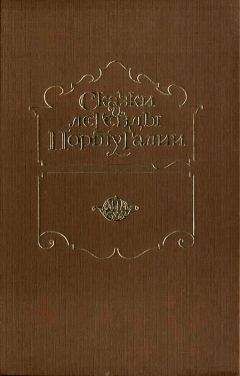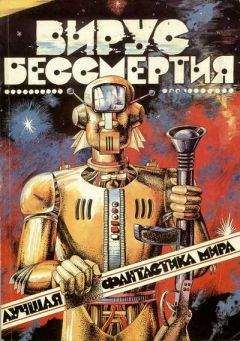4
Abbas Milani, “Iran’s Islamic Revolution: Three Paradoxes”, Open Democracy, February 9, 2009, http://www.opendemocracy.net/article/iran-s-islamic-revolution-three-paradoxes.html
Abrahamian, History, p. 161.
“Remembering Iran’s 1979 Islamic Revolution”, Morning Edition, NPR program hosted by Steve Inskeep, August 17, 2009, http://www.npr.org/templates/story/story.php?storyId=111944123
Taheri, Spirit, chap. 1.
Из августовского отчета ЦРУ за 1978 год, который Гари Сик (Gary Sick) – главный советник Белого дома по Ирану во время революции цитирует в своей книге «All Fall Down: America’s Tragic Encounter with Iran» (New York: Random House, 1985), p. 92.
Bruce D. Berkowitz and Allan E. Goodman, Best Truth: Intelligence in the Information Age (New Haven: Yale University Press, 2002).
Susan Landau, Surveillance or Security: The Risks Posed by New Wiretapping Technologies (Cambridge: MIT Press, 2010), sec. 9.6.
Annabelle Sreberny Mohammadi and Ali Mohammadi, Small Media, Big Revolution: Communication, Culture, and the Iranian Revolution (Minneapolis: University of Minnesota Press, 1994).
Landau, Surveillance, p. 216.
Chris Taylor, “The Chinese Plague”, World Press Review 50 (2003), http://www.worldpress.org/Asia/1148.cfm
Tim Spanton, “World’s Deadliest Cough”, Sun, July 28, 2007, http://www.thesun.co.uk/sol/homepage/news/158143/Worlds-deadliest-cough.html
“SARS FAQ”, Disaster Center, http://www.disastercenter.com/Severe%20Acute%20Respiratory%20Syndrome.htm
Simon More, “Severe Acute Respiratory Syndrome (SARS)” (Power-Point presentation at EADGENE Workshop on Interpreting Field Disease Data, Edinburgh, Scotland, February 1–2, 2010).
Donald J. MacNeil Jr., “Disease’s Pioneer Is Mourned as a Victim”, New York Times, April 8, 2003, http://www.nytimes.com/2003/04/08/science/disease-s-pioneer-is-mourned-as-a-victim.html
Laurie Garrett, “Outbreak”, review of China Syndrome: The True Story of the 21st Century’s First Great Epidemic by Karl Taro Greenfeld, in Washington Post, April 9, 2006, http://www.washingtonpost.com/wp-dyn/content/article/2006/04/06/AR2006040601666.html
Alexander Batalin, “SARS Pneumonia Virus, Synthetic Manmade, according to Russian Scientist”, Global Research, November 10, 2003, http://globalresearch.ca/articles/BAT304A.html
World Health Organization, SARS: How a Global Epidemic Was Stopped (Geneva: WHO Press, 2006), chap. 15.
“Summary Table of SARS Cases by Country, 1 November 2002–7 August 2003”, World Health Organization, August 15, 2003, http://www.who.int/csr/sars/country/country2003_08_15.pdf
Jeffery Taubenberger and David Morens, “1918 Influenza: The Mother of All Pandemics”, Emerging Infectious Diseases 12 (2006), http://wwwnc.cdc.gov/eid/article/12/1/05–0979_article.htm
World Health Organization, SARS, introd.
“SARS Whistle-blower Breathing a Sigh of Relief”, China News Daily, May 21, 2003, http://english.peopledaily.com.cn/200305/21/eng20030521_117004.shtml
Paul Dourish and Genevieve Bell, Divining a Digital Future: Mess and Mythology in Ubiquitous Computing (Cambridge: MIT Press, 2011), p. 33.
Rania Abouzeid, “Bouazizi: The Man Who Set Himself and Tunisia on Fire”, Time, January 21, 2011, http://www.time.com/time/magazine/article/0,9171,2044723,00.html
David Kirkpatrick, “Tunisia Leader Flees and Prime Minister Claims Power”, New York Times, January 14, 2011, http://www.nytimes.com/2011/01/15/world/africa/15tunis.html; Robert Mackey’s blog, The Lede (blog), New York Times, references Bouazizi two days earlier: “Tunisians Document Protests Online”, January 12, 2011, http://thelede.blogs.nytimes.com/2011/01/12/tunisians-document-protests-online
Sal Gentile, “Octavia Nasr: US Media Missed ‘the Anatomy’ of Tunisia’s Revolution”, PBS Need to Know, January 21, 2011, http://www.pbs.org/wnet/need-to-know/the-daily-need/octavia-nasr-u-s-media-missed-the-anatomy-of-tunisias-revolution/6668
Kimberly Dozier, “Intelligence Community under Fire for Egypt Surprise”, Associated Press, http://www.msnbc.msn.com/id/41423648/ns/politics-more_politics/t/intelligence-community-under-fire-egypt-surprise/#.UGNE_Pl27_A
В своей книге «The Restless Searchlight: Network News Framing of the Post Cold-War World» Пиппа Норис (Pippa Norris) приводит результаты исследования международных новостей на телевидении конца 1960–1970-х годов, доля которых составляла от 25 до 40 % всего новостного вещания, http://www.hks.harvard.edu/fs/pnorris/Acrobat/Restless%20Searchlight.pdf Алиса Миллер (Alisa Miller), цитируя работу «Project for Excellence in Journalism» («Проект по совершенствованию журналистского мастерства»), оценивает долю иностранных и международных новостей на современном телевидении в 10 %, из Media Makeover: Improving the News One Click at a Time (TED Books: 2011), Kindle ed.
«Услуги мобильной телефонии на сегодня доступны трем четвертям населения планеты». Из пресс-релиза Всемирного банка от 17 июля 2012 года, http://www.worldbank.org/en/news/2012/07/17/mobile-phone-access-reaches-three-quarters-planets-population
Duncan J. Watts, Six Degrees: The Science of a Connected Age (New York: W. W. Norton, 2004), p. 283.
Что послужило причиной изгнания Диогена, по-прежнему до конца не выяснено. В одном из источников говорится, что его наказали за «ущерб денежной системе». Историки по-прежнему пытаются выяснить что именно это означает. То ли Диоген и его отец, который, вероятно, был казначеем Синопа, подворовывали, то ли он нанес ущерб денежной системе, отрицая ее как таковую.
Диоген Лаэртский. О жизни, учениях и изречениях знаменитых философов / пер. и примеч. М. Л. Гаспарова; общ. ред. и вступ. ст. А. Ф. Лосева. – М.: Мысль, 1979.
“The World Goes to Town”, Economist, May 3, 2007, http://www.economist.com/node/9070726
Margaret C. Jacob, “The Cosmopolitan as a Lived Category”, Daedalus 137, no. 3 (Summer 2008): 18–25.
Robert D. Putnam, “E Pluribus Unum: Diversity and Community in the Twenty-First Century: The 2006 Johan Skytte Prize Lecture”, Scandinavian Political Studies 30 (2007): 137–74.
Ibid.
Kwame Anthony Appiah, Cosmopolitanism: Ethics in a World of Strangers (New York: W. W. Norton, 2007), p. xv.
Такие высказывания отдают моральным релятивизмом, однако от подобных обвинений Аппиа защищается, провозглашая общие для всех культур универсальные ценности, которые лишь маскируются разнообразными табу, имеющими локальный характер применения и распространения.
“Picasso’s African-Influenced Period: 1907 to 1909”, http://www.pablopicasso.org/africanperiod.jsp
Andrew Meldrum, “Stealing Beauty: How Much Did Picasso’s Paintings Borrow from African Art?”, Guardian, March 14, 2006, http://www.guardian.co.uk/artanddesign/2006/mar/15/art
Corinna Lotz, in Apollo: The International Magazine for Collectors, December 2007, p. 122, http://www.apollo-tmagazine.com/reviews/books/386241/art-that-scared-picasso.thtml
Meldrum, “Stealing Beauty”.
Meldrum, “Stealing Beauty”.
Picasso and Africa, ed. Laurence Madeline and Marilyn Martin (Johannesburg: Standard Bank Gallery, 2006), catalog of an exhibition held at the Standard Bank Gallery, Johannesburg, February 10 through March 19, 2006, and the Iziko South African National Gallery, Cape Town, April 13 through May 21, 2006.
Léopold Sédar Senghor, “Masque nègre” (фр. – «Черная маска») in Chants d’ombre (фр. – «Песни тени») (1945), http://philosophie-et-litterature.oboulo.com/chants-ombre-leopold-sedar-senghor-1945-masque-negre-114650.html, cited in Lotz, “Art That Scared Picasso”.
Roger E. Bohn and James E. Short, “How Much Information? 2009 Report on American Consumers”, Global Information Industry Center of the University of California – San Diego, January 2010, http://hmi.ucsd.edu/pdf/HMI_2009_ConsumerReport_Dec9_2009.pdf
Семнадцать минут в день, по данным Pew Research Center, “Americans Spending More Time Following the News”, September 12, 2010, http://people-press.org/2010/09/12/americans-spending-more-time-following-the-news/
Howard Rheingold, The Virtual Community: Homesteading on the Electronic Frontier, rev. ed. (Cambridge: MIT Press, 2000), p. 181.
Tom Standage, The Victorian Internet: The Remarkable Story of the Telegraph and the Nineteenth Century’s On-line Pioneers (New York: Berkley Books, 1999), p. 83.
Joseph J. Corn, The Winged Gospel: America’s Romance with Aviation (Baltimore: Johns Hopkins University Press, 2002), p. 37.
Ivan Narodny, “Marconi’s Plans for the World”, Technical World Magazine 18 (1912): 145–50.
From a 1926 interview in Colliers, quoted in “ Marshall McLuhan Foresees the Global Village”, http://www.livinginternet.com/i/ii_mcluhan.htm
Langdon Winner, “Sow’s Ears from Silk Purses: The Strange Alchemy of Technological Visionaries”, in Technological Visions: The Hopes and Fears That Shape New Technologies, ed. Marita Sturken et al. (Philadelphia: Temple University Press, 2004), p. 34.
Из личной переписки с Говардом Рейнгольдом.
Benjamin Disraeli, Vivian Grey (London: Henry Colburn, 1826), bk. 6, chap. 7.
Jens Eric Gould, “The Making of the Innocence of Muslims: One Actor’s Story”, Time, September 13, 2012, http://nation.time.com/2012/09/13/the-making-of-innocence-of-muslims-one-actors-story
Позднее Джонс все-таки сжег несколько экземпляров Корана, хотя его действия привлекли меньше внимания, чем угрозы, прозвучавшие в 2010 году. См.: Kevin Sieff, “Florida Pastor Terry Jones’s Koran Burning Has Far-reaching Effect”, Washington Post, April 2, 2011, http://www.washingtonpost.com/local/education/florida-pastor-terry-joness-koran-burning-has-far-reaching-effect/2011/04/02/AFpiFoQC_story.html
Pamela Constable, “Egyptian Christian Activist in Virginia Promoted Video That Sparked Furor”, Washington Post, September 13, 2012, http://www.washingtonpost.com/local/egyptian-christian-activist-in-virginia-promoted-video-that-sparked-furor/2012/09/13/f2a52a4c-fdc4–11e1-b153–218509a954e1_story.html
Robert Mackey and Liam Stack, “Obscure Film Mocking Muslim Prophet Sparks Anti-U. S. Protests in Egypt and Libya”, The Lede (blog), New York Times, September 11, 2012, http://thelede.blogs.nytimes.com/2012/09/11/obscure-film-mocking-muslim-prophet-sparks-anti-u-s-protests-in-egypt-and-libya; John Hudson, “The Egyptian Outrage Peddler Who Sent Anti-Islam YouTube Clip Viral”, Atlantic Wire, September 13, 2012, http://www.theatlanticwire.com/ global/2012/09/egyptian-outrage-peddler-who-sent-anti-islam-youtube-clip-viral/56826/
Yoni Bashan, “Arrests Made after Police Officers Injured at Anti-Islamic Film Protest in Sydney CBD”, Daily Telegraph, September 16, 2012, http://www.dailytelegraph.com.au/news/police-use-pepper-spray-on-anti-islamic-film-protesters-in-sydney-at-the-us-consulate/story-e6freuy9–1226474744811; “Belgian Police Detain 230 Protesting Anti-Islam Film”, Hürriyet Daily News, September 16, 2012, http://www.hurriyetdailynews.com/belgian-police-detain– 230-protesting-anti-islam-film-.aspx?pageID=238&nID=30247&NewsCatID=351
Mona Shadia and Harriet Ryan, “California Muslims Hold Vigil for Slain Ambassador”, Los Angeles Times, September 15, 2012, http://articles.latimes.com/2012/sep/15/local/la-me-anti-muslim-film-20120915
Judith S. Donath, “Identity and Deception in the Virtual Community”, Communities in Cyberspace, ed. Marc A. Smith and Peter Kollock (London: Routledge, 1999), pp. 27–58.
Marc Lynch, “The Failure of #MuslimRage”, Foreign Policy, September 21, 2012, http://lynch.foreignpolicy.com/posts/2012/09/21/a_funny_thing_happened_on_the_way_to_muslimrage





